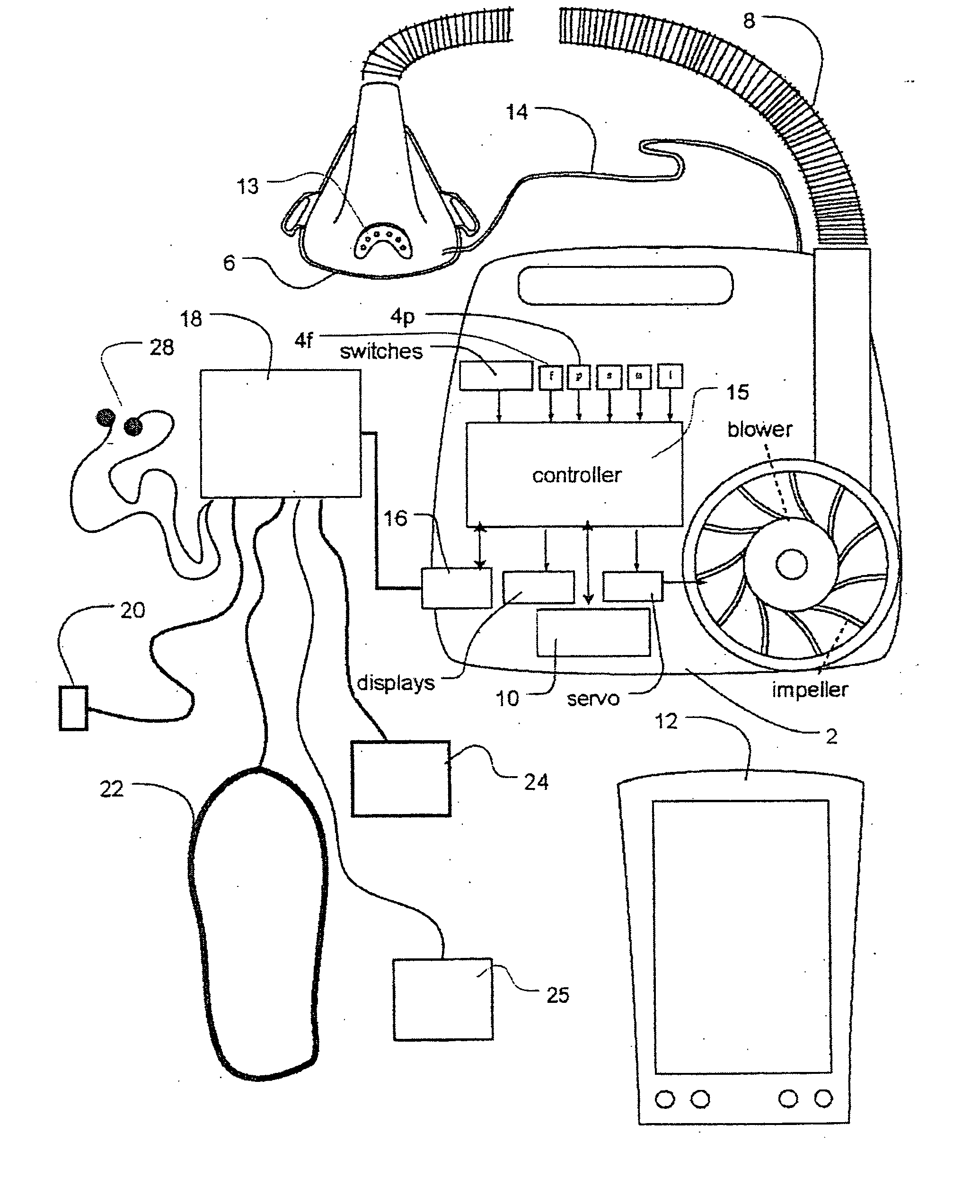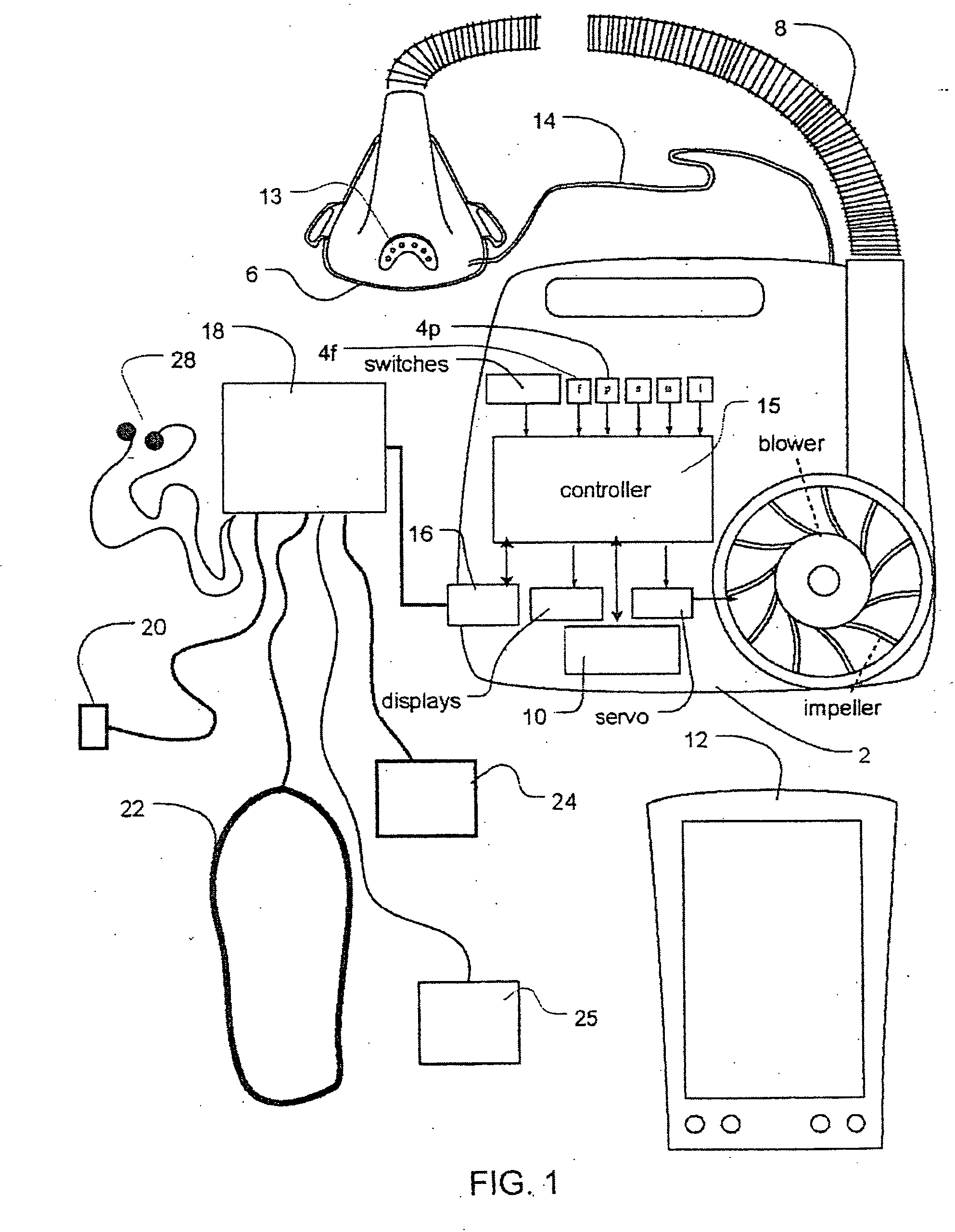Methods and apparatus for heart failure treatment
a heart failure and treatment method technology, applied in the field of methods and apparatus for treating congestive heart failure, can solve the problems of reducing the capacity to circulate blood, the number of patients cannot account for the number of patients, and the inability to treat congestive heart failure, so as to achieve the effect of increasing the treatment pressure, increasing the treatment level, and increasing the pressur
- Summary
- Abstract
- Description
- Claims
- Application Information
AI Technical Summary
Benefits of technology
Problems solved by technology
Method used
Image
Examples
Embodiment Construction
[0037] In reference to FIG. 1, the heart failure treatment invention involves an apparatus that includes a blower 2, a flow sensor 4f, pressure sensor 4p, a mask 6, and an air delivery conduit 8 for connection between the blower 2 and the mask 6. Exhaust gas is vented via exhaust 13. Mask flow is preferably measured using a pneumotachograph and differential pressure transducer to derive a flow signal F(t). Mask pressure is preferably measured at a pressure tap using a pressure transducer to derive a pressure signal Pmask(t). The pressure sensor 4f and flow sensor 4p have only been shown symbolically in FIG. 1 since it is understood that those skilled in the art would understand how to measure flow and pressure. Flow F(t) and pressure Pmask(t) signals are sent to a controller or microprocessor 15 to derive a pressure request signal PRequest(t). The controller or processor is configured to implement the methodology described in more detail herein and may include integrated chips, a me...
PUM
 Login to View More
Login to View More Abstract
Description
Claims
Application Information
 Login to View More
Login to View More - R&D
- Intellectual Property
- Life Sciences
- Materials
- Tech Scout
- Unparalleled Data Quality
- Higher Quality Content
- 60% Fewer Hallucinations
Browse by: Latest US Patents, China's latest patents, Technical Efficacy Thesaurus, Application Domain, Technology Topic, Popular Technical Reports.
© 2025 PatSnap. All rights reserved.Legal|Privacy policy|Modern Slavery Act Transparency Statement|Sitemap|About US| Contact US: help@patsnap.com



